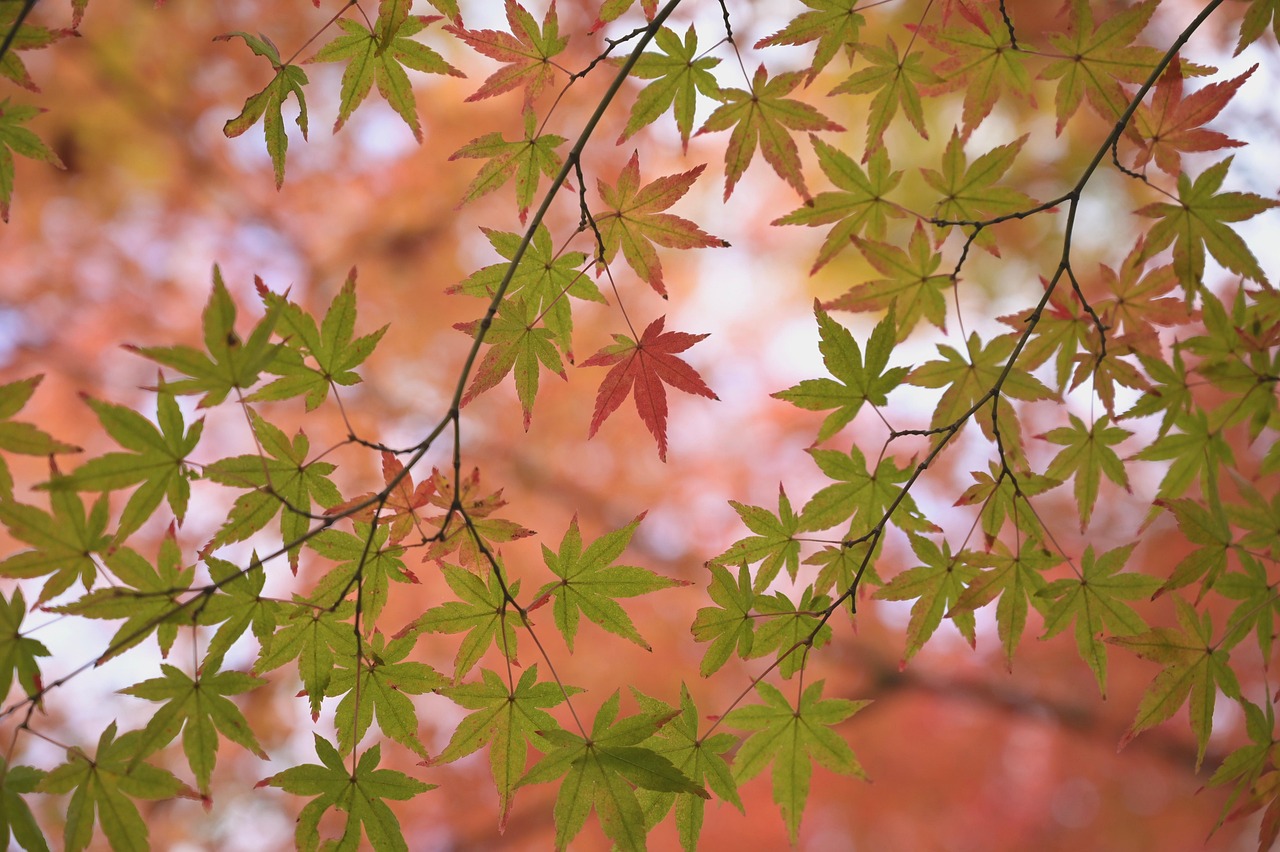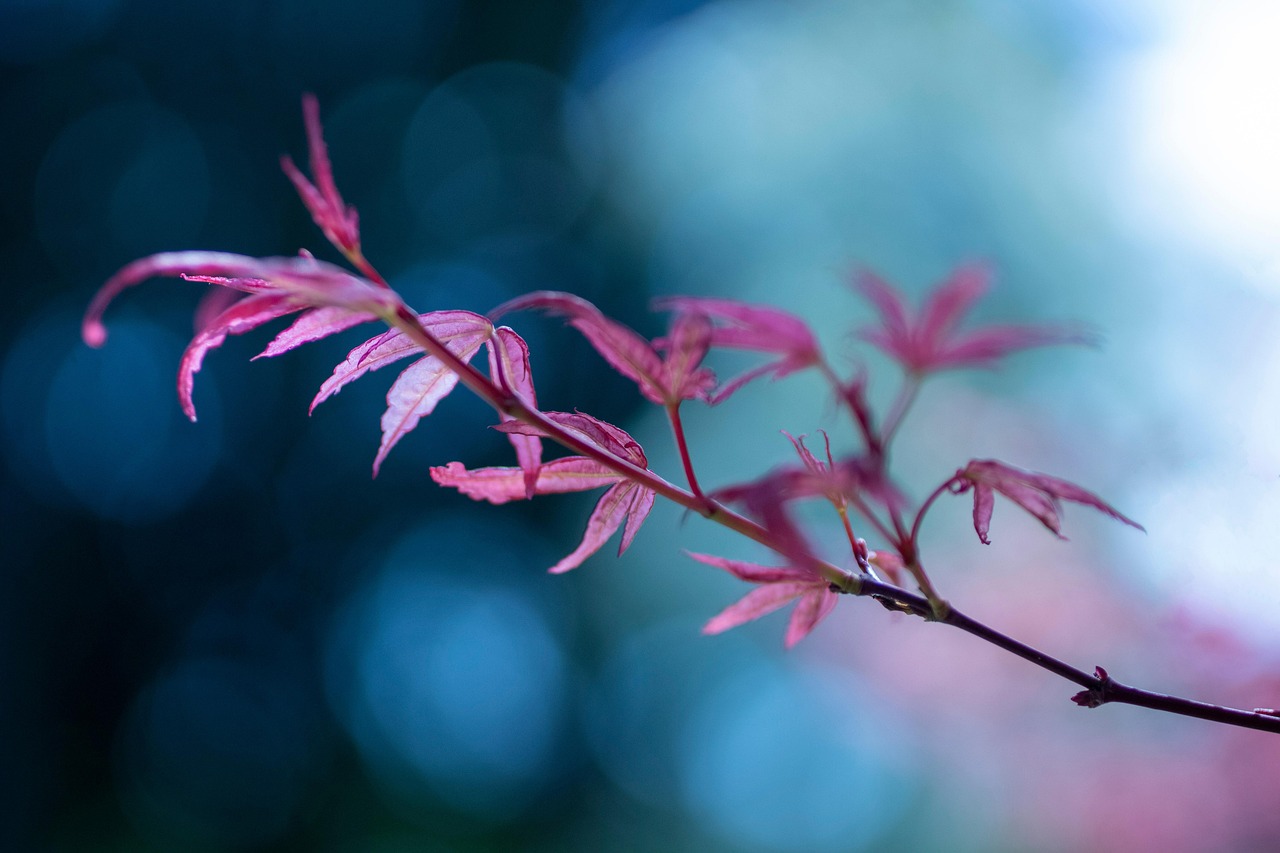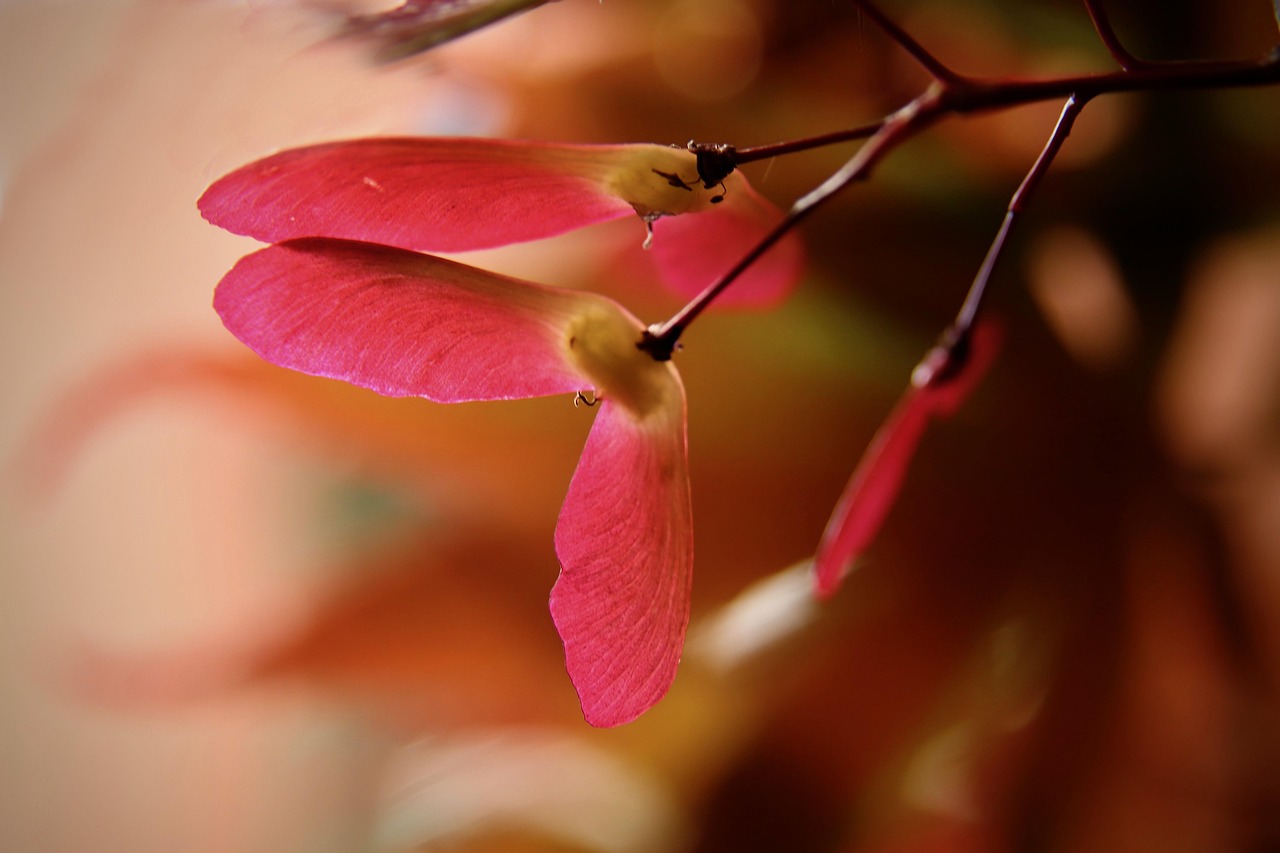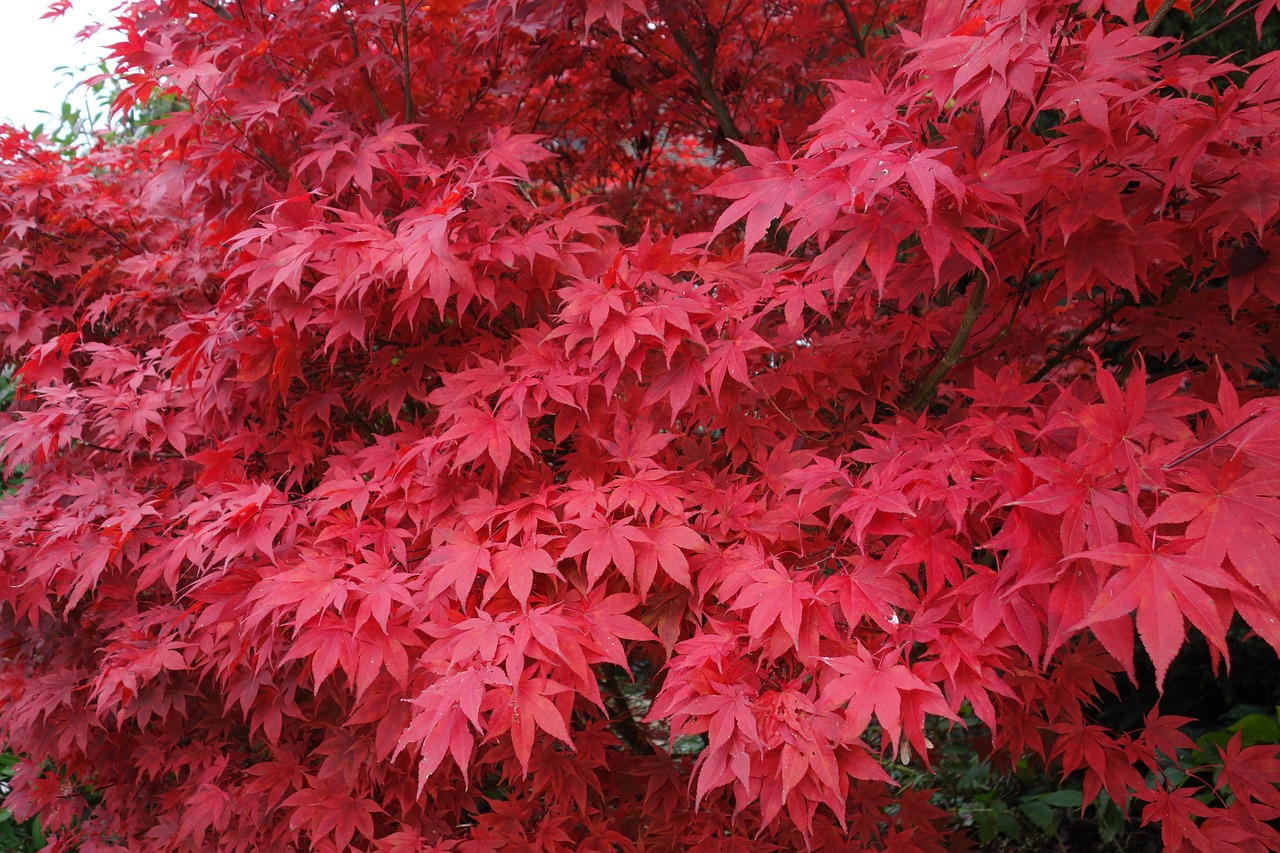Pruning a Japanese maple tree in autumn enhances its vibrant fall colors by removing dead or crossing branches. This practice also helps maintain the tree’s shape and encourages healthy growth for the following season.
The Japanese maple tree, scientifically known as Acer palmatum, is cherished for its stunning foliage and elegant form. These trees are popular in gardens and landscapes for their delicate leaves and vibrant colors, particularly in autumn when they transform into a breathtaking palette of reds, oranges, and yellows. Proper pruning is essential to maximize the aesthetic appeal of these trees while ensuring their health and longevity.

Pruning during the autumn months can be somewhat different from other seasons. While many gardeners choose to prune in late winter or early spring when trees are still dormant, autumn pruning can be beneficial for Japanese maples. It allows you to assess the tree’s structure and remove any unwanted growth without disturbing the tree too much.
Understanding Japanese Maple Trees
Japanese maples are small to medium-sized trees that can reach heights of up to 25 feet. They are known for their unique leaf shapes and colors, which vary significantly among the numerous cultivars. Some important characteristics include:
- Leaf Shape: The leaves are typically palmately lobed, resembling an open hand.
- Color Variations: Leaves come in shades of green, red, purple, and variegated forms.
- Growth Habit: They can have a weeping, upright, or spreading form depending on the cultivar.
Japanese maples thrive best in well-drained soil with partial shade. This makes them ideal for gardens where they can be highlighted as focal points. To ensure the best possible growth and color display, understanding how to prune these trees correctly is crucial.

Why Prune Japanese Maple Trees?
Pruning serves multiple purposes in maintaining the health and aesthetics of Japanese maples. Here are some of the main reasons why pruning is necessary:
- Promote Healthy Growth: Removing dead or diseased branches prevents the spread of decay and encourages new growth.
- Improve Air Circulation: Thinning out dense areas allows for better airflow, reducing the risk of fungal diseases.
- Enhance Visual Appeal: Pruning shapes the tree and highlights its natural beauty, particularly during the autumn color display.
Best Time to Prune
The timing of pruning can greatly affect the results you achieve. While many experts recommend late winter or early spring for most trees, autumn can also be a suitable time for Japanese maples. However, it is essential to consider a few factors:
- Temperature: Ensure that temperatures are mild during pruning to minimize stress on the tree.
- Timing: Aim to prune after the leaves have changed color but before the first frost.
- Tree Health: Assess the overall health of the tree. If it shows signs of stress or disease, consult an arborist before proceeding.
Pruning in autumn allows for an easy evaluation of the tree’s structure and any areas that may need attention. It is an opportunity to prepare the tree for its dormant season while enhancing its fall display.

Essential Tools for Pruning
Using the right tools is crucial for effective pruning. Here is a list of essential tools you may need:
| Tool | Description |
|---|---|
| Hand Pruners | Ideal for small branches up to ¾ inch thick. |
| Loppers | Used for branches up to 1½ inches thick. |
| Saws | A pruning saw is helpful for larger branches. |
| Gloves | Protect your hands from sharp branches and thorns. |
Using sharp, clean tools will ensure clean cuts, which help the tree heal faster and reduce the risk of infection. It is also important to sanitize your tools between cuts if you notice any signs of disease on the tree.
Techniques for Pruning Japanese Maple Trees
There are specific techniques to follow when pruning Japanese maples. Understanding these techniques can help you achieve desired results while maintaining the health of your tree:

- Crown Thinning: Remove excess branches to allow light penetration and improve air circulation.
- Crown Raising: Trim lower branches to create more space underneath while maintaining the structure of the tree.
- Crown Reduction: Shorten overly long branches to maintain the desired height and shape without compromising aesthetics.
Each technique plays a role in enhancing the visual appeal of your Japanese maple while ensuring it remains healthy and resilient through changing seasons. When executed correctly, pruning can lead to stunning autumn colors that will captivate any onlooker.
Common Mistakes in Pruning Japanese Maples
Pruning Japanese maples requires precision and care. However, even experienced gardeners can make mistakes that may affect the tree’s health and appearance. Here are some common mistakes to avoid:
- Over-pruning: Removing too many branches can stress the tree and reduce its ability to produce foliage and flowers.
- Improper Timing: Pruning at the wrong time of year can lead to sap loss or damage from frost. Aim to prune when the tree is dormant or just after the leaves have fallen.
- Neglecting Tool Maintenance: Using dull or dirty tools can create jagged cuts that are more susceptible to disease.
- Ignoring Tree Structure: Failing to consider the natural shape of the tree can result in an unbalanced appearance.
By being aware of these common pitfalls, you can ensure that your pruning efforts are both effective and beneficial for your Japanese maple. Taking the time to learn proper techniques will yield a healthier and more beautiful tree.
Signs Your Japanese Maple Needs Pruning
Identifying when your Japanese maple requires pruning is crucial for maintaining its health. Here are some signs that it may be time to prune:
- Dead or Dying Branches: Look for branches that are brown, brittle, or devoid of leaves.
- Crowded Growth: If branches are crossing or overcrowded, the tree may benefit from thinning.
- Pest Infestation: Signs of pests or disease can indicate that affected branches should be removed.
- Poor Growth: If the tree is not producing new growth or has weak branches, pruning may stimulate healthier development.
Regularly inspecting your Japanese maple can help you catch these issues early. Prompt action can prevent further damage and promote a vibrant, healthy tree.
Seasonal Considerations for Pruning
The different seasons bring various challenges and advantages for pruning. Understanding these can help you decide the best approach for your Japanese maple. Here’s a breakdown by season:
| Season | Pruning Advantages | Considerations |
|---|---|---|
| Spring | Promotes new growth and allows for immediate visibility of results. | Can stress the tree if too much is removed; avoid during flowering. |
| Summer | Good for light pruning and shaping as growth slows. | Avoid heavy pruning to keep tree healthy during peak growth. |
| Autumn | Enhances fall colors and prepares the tree for dormancy. | Ensure pruning is done before frost; watch for signs of stress. |
| Winter | Ideal for major pruning when the tree is dormant. | Cold temperatures can impact cuts; be cautious of frozen branches. |
This seasonal guide helps you choose the optimal time for pruning Japanese maples. Each season has its unique characteristics that can either aid or hinder your efforts. Planning your approach will lead to better outcomes.
How to Prune Japanese Maple Trees Effectively
To achieve the best results when pruning Japanese maples, follow these steps:
- Assess the Tree: Begin by evaluating the overall structure and health of the tree. Identify any dead, damaged, or crossing branches.
- Select Tools: Gather the necessary tools, ensuring they are sharp and clean to make precise cuts.
- Make Cuts Carefully: Use clean cuts at a slight angle to prevent water accumulation. Avoid leaving stubs as they can attract pests and diseases.
- Step Back Frequently: Periodically step back to view the overall shape of the tree. This helps maintain balance as you prune.
- Avoid Topping: Never cut off the top of the tree indiscriminately. This technique can lead to unsightly growth patterns.
By following these steps, you can ensure that your pruning techniques are effective and promote a healthy, beautiful Japanese maple tree. The right approach will significantly enhance both its structure and its autumn colors.
The Role of Fertilization After Pruning
Fertilization plays an important role in supporting a Japanese maple’s recovery after pruning. Proper nutrition helps encourage new growth and vibrant color. Here are some tips for fertilizing after pruning:
- Select the Right Fertilizer: Use a balanced fertilizer formulated specifically for trees or shrubs. Look for one with equal parts nitrogen (N), phosphorus (P), and potassium (K).
- Timing: Fertilize in early spring after pruning to support new growth as the tree begins to leaf out.
- Application Method: Apply fertilizer evenly around the root zone, avoiding direct contact with the trunk. Water thoroughly after application to help nutrients penetrate the soil.
This approach ensures that your Japanese maple receives essential nutrients following pruning, promoting healthy growth and enhancing its stunning autumn display.
Pest and Disease Management for Japanese Maples
Japanese maples can be susceptible to various pests and diseases, which can impact their health and appearance. Proper management is essential for maintaining vibrant autumn colors and overall tree vitality. Here are some common pests and diseases to watch for:
Common Pests
- Aphids: These small insects feed on sap and can cause leaf curling and discoloration. Regular inspection helps catch infestations early.
- Spider Mites: Infestations may cause stippling on leaves and fine webbing. Increasing humidity can help deter these pests.
- Scale Insects: Scale can appear as small bumps on branches or leaves, draining the tree’s energy. Manual removal or horticultural oil applications can be effective.
Common Diseases
Several diseases can afflict Japanese maples, often resulting in leaf discoloration or dieback:
- Leaf Spot: Caused by fungal infections, this disease creates dark spots on leaves, leading to premature leaf drop.
- Verticillium Wilt: A soil-borne fungus that affects the vascular system of the tree, causing wilting and yellowing of leaves.
- Powdery Mildew: This fungal disease appears as a white powdery coating on leaves, inhibiting growth.
Strategies for Pest and Disease Control
Implementing effective strategies for managing pests and diseases is vital for the health of your Japanese maple. Here are some approaches:
- Cultural Practices: Maintain proper spacing between trees to ensure good air circulation, reducing humidity levels that favor fungal growth.
- Regular Inspections: Monitor your trees frequently for early signs of pests or diseases so you can act quickly.
- Organic Treatments: Consider using neem oil or insecticidal soap for pest control, as these options are less harmful to beneficial insects.
- Fungicides: For serious fungal issues, apply appropriate fungicides according to label instructions.
By being proactive in pest and disease management, you can help your Japanese maple thrive and maintain its stunning autumn colors.
The Importance of Proper Watering
Watering is crucial for the health of Japanese maples, especially after pruning. Adequate moisture supports recovery and encourages vibrant foliage. Here are key watering practices to consider:
- Soil Type: Japanese maples prefer well-drained soil. Sandy loam or loamy soils are ideal. Avoid heavy clay soils that retain too much moisture.
- Frequency: Water deeply but infrequently. Allow the top inch of soil to dry out before watering again to prevent root rot.
- Seasonal Adjustments: Increase watering during hot summer months, especially if the tree shows signs of wilting or leaf scorch.
Proper watering helps establish a strong root system, which is vital for absorbing nutrients and supporting healthy growth.
Mulching for Healthier Trees
Applying mulch around the base of your Japanese maple can provide numerous benefits. Here are some advantages of mulching:
- Moisture Retention: Mulch helps retain soil moisture, reducing the need for frequent watering.
- Weed Suppression: A good layer of mulch inhibits weed growth that competes for nutrients and water.
- Temperature Regulation: Mulch helps regulate soil temperature, protecting roots during extreme weather conditions.
When applying mulch, keep it several inches away from the trunk to prevent rot and encourage airflow. Use organic materials like wood chips or bark to enrich the soil as they decompose.
Caring for Japanese Maples in Winter
The winter months can pose challenges for Japanese maples. Proper care during this season is essential to ensure they remain healthy. Here are some tips for winter care:
- Avoid Late Season Pruning: Pruning too late in the fall can expose fresh cuts to cold temperatures, leading to damage. Ensure all pruning is completed before temperatures drop significantly.
- Winter Protection: Consider wrapping young trees with burlap or using protective screens to shield them from harsh winds and freezing temperatures.
- Irrigation Needs: In winter, if there is little rainfall, continue to water your tree during dry spells, especially if temperatures rise above freezing.
Caring for your Japanese maple through winter will help it emerge strong and vibrant in spring, ready to display its stunning foliage in autumn once again.
Enhancing Autumn Colors Through Proper Pruning Techniques
Pruning Japanese maples not only shapes their structure but also enhances their vibrant autumn colors. Understanding the specific needs of these trees allows gardeners to maximize their visual appeal. Here are additional practices that contribute to achieving stunning fall foliage:
- Focus on Branch Angles: Pay attention to the angles of the branches when pruning. Wide-angled branches tend to be stronger and can support more foliage, leading to a fuller appearance in autumn.
- Encourage Smaller Branch Growth: By selectively pruning larger branches, you encourage the growth of smaller, more colorful branches that will display brilliant fall colors.
- Minimize Stress Factors: Avoid other stressors such as over-fertilization or drought, which can detract from the tree’s ability to produce vibrant autumn leaves.
Implementing these techniques helps create a tree that not only looks beautiful but is also healthy and thriving, ready to showcase its stunning colors as the seasons change.
Seasonal Care Beyond Pruning
Beyond pruning, seasonal care plays a vital role in maintaining the health and beauty of Japanese maples. Here are some considerations for each season:
Spring
- Monitor New Growth: As new leaves emerge, keep an eye on their health. Address any signs of pests or diseases immediately.
- Mulching: Apply a fresh layer of mulch in spring to retain moisture and suppress weeds.
Summer
- Watering Consistency: Ensure consistent watering during hot months to prevent stress and leaf scorch.
- Shade Considerations: Protect younger trees from intense afternoon sun, which can damage leaves.
Fall
- Leaf Cleanup: Rake fallen leaves regularly to prevent disease buildup and maintain aesthetics.
- Final Fertilization: Consider a light application of fertilizer in early fall to promote root development before winter.
Winter
- Regular Inspections: Check for signs of damage or disease during winter months to address issues early.
- Protecting Roots: Use mulch or burlap around the base to insulate roots against freezing temperatures.
Caring for Japanese maples involves understanding their unique requirements throughout the year. By being attentive, you can ensure their health and beauty across all seasons.
Final Thoughts
Pruning Japanese maple trees is vital for achieving vibrant autumn colors and maintaining overall tree health. By understanding the specific techniques, timing, and care necessary, you can cultivate stunning specimens that enhance any landscape. Remember that each tree is unique, requiring individual attention based on its health and environment.
The rewards of proper pruning and care are evident when your Japanese maple displays its rich hues in the fall. With a combination of thoughtful pruning, seasonal care, pest management, and fertilization, you can foster a resilient tree that captivates with its beauty year after year. Embrace the art of nurturing your Japanese maple, and enjoy the breathtaking spectacle it brings to your garden each autumn.
Your commitment to these practices will not only lead to healthier trees but also create an inviting outdoor space filled with color and life. Whether you’re an experienced gardener or just starting out, the journey of caring for Japanese maples is both rewarding and enriching.
